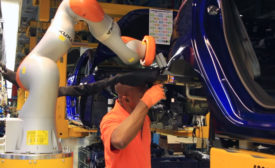Robotics Assembly
Robots Stand Out at Automatica
Suppliers from around the world displayed the latest assembly technology at Automatica 2016.
August 4, 2016
Never miss the latest news and trends driving the manufacturing industry
Stay in the know on the latest assembly trends.
JOIN TODAY!Copyright ©2024. All Rights Reserved BNP Media.
Design, CMS, Hosting & Web Development :: ePublishing









